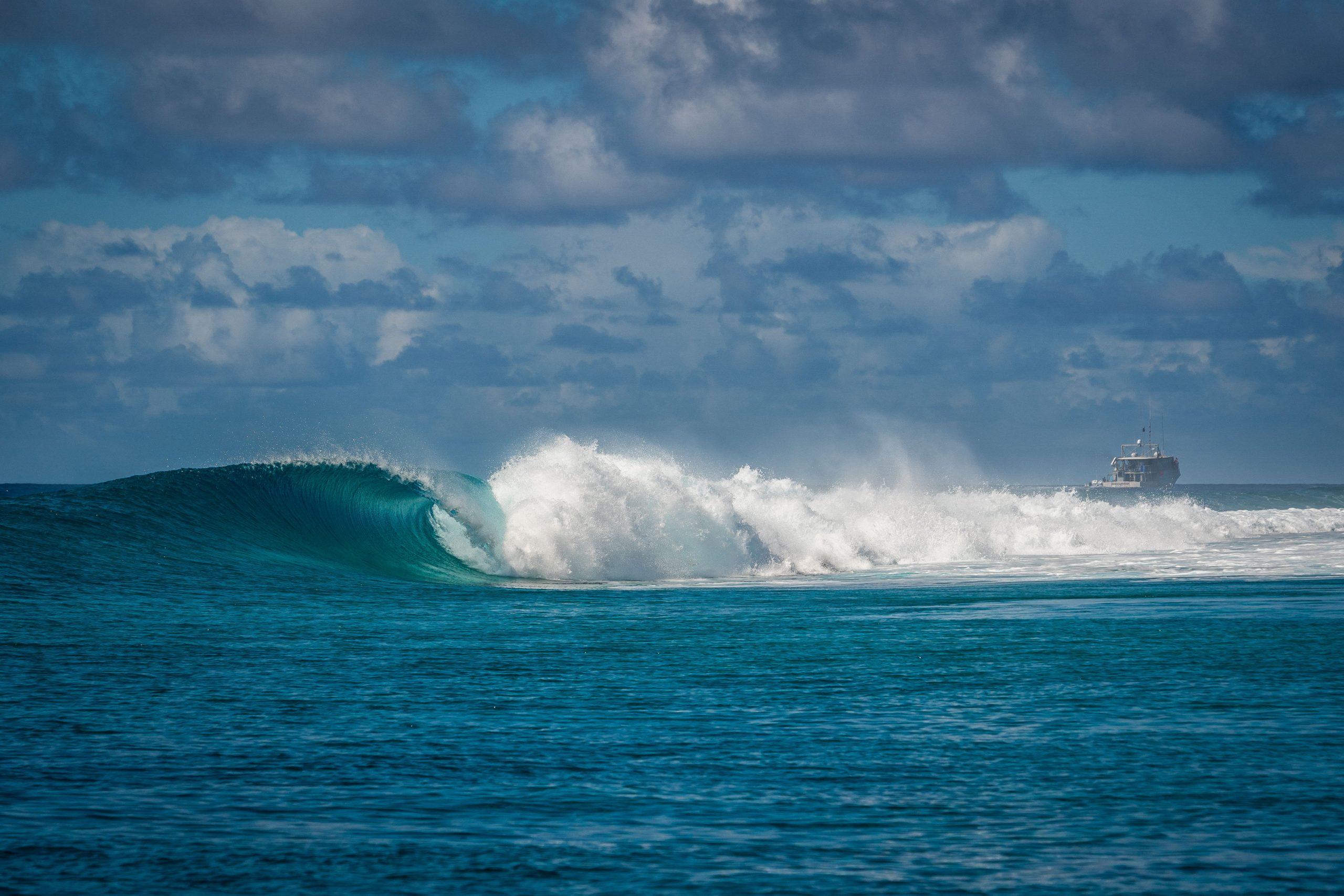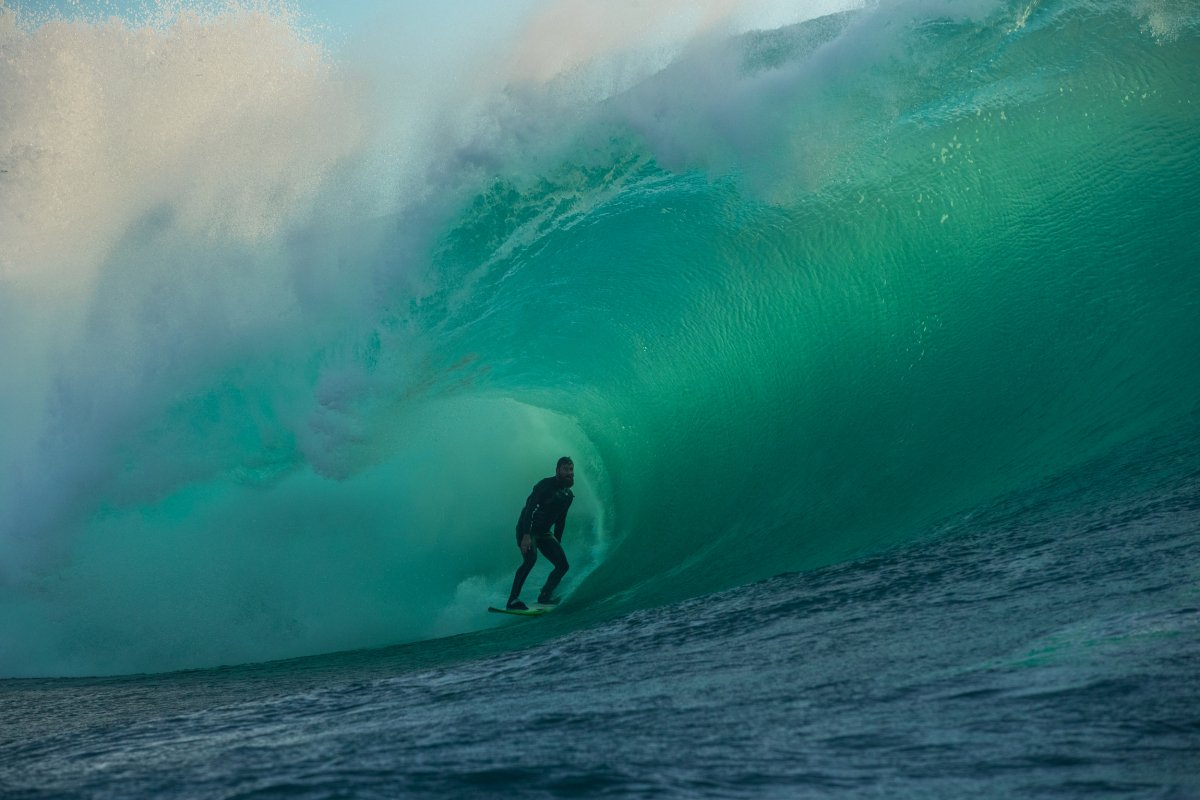Are Our Favorite Surf Spots Doomed?
“Two degrees of warming would be a death sentence. Their communities would be inundated, and eventually destroyed… in as little as 30 years”
A couple weeks back, the International Panel on Climate Change (IPCC) released its 10-year study on Earth’s environment.
It is dire. Especially for surfers.
Based on more than 6,000 cited studies and written by 91 authors from 40 different countries, the IPCC’s report focuses on the catastrophic changes that will occur if global temperatures rise 2-degrees Celsius over pre-industrial times. For context, we are currently between 1-to-1.2 degrees (C) over pre-industrial temperatures and, according to experts, the rate of that growth is rapidly increasing.
“If warming continues at its current rate, it could reach 1.5-degrees by the time a child who is now a toddler starts high school,” reads The New Yorker’s report summary.
According to the IPCC, keeping global temperatures at-or-below that 1.5-degree threshold is vital for many small island nations, as anything close to a 2-degree increase would be catastrophic.
“For the citizens of small island countries and other vulnerable places in the tropics and the Arctic, even two degrees of warming would be a death sentence. Their communities would be inundated, and eventually destroyed. This could happen [in as little as 30 years],” The New Yorker summarized. “‘1.5 to Stay Alive’ has become a rallying cry for the leaders of the Alliance of Small Island States, which includes places like the Bahamas, the Maldives, and the Marshall Islands.”
All of which is terrible news for the people of those small island nations, but seeing as how atrocities against “the other” rarely incite more than a sigh from the apathetic reader, the following will be framed in a way that any selfish surfing mind can comprehend:
If these islands go down, so do the perfect waves surrounding them.

This slice of Marshalls magic is directly under threat.
Photography
Damea Dorsey
We’re talking Martin Daly’s mystical Marshalls’ right, as surfed by John Florence and Kelly Slater; Pasta Point and Sultan’s in the Maldives, setting of Josh Kerr’s recent alt-board victory; the Bahamas’ myriad of reefy haunts, as frequented by Cory Lopez, Ian Crane, and Bal Stack.
All of those spots and many, many more around the world will vanish—or at least get exceptionally mushier, if the 2-degree increase is reached.
As recently as one week ago, a remote Hawaiian island disappeared as a result of the Pacific’s wild hurricane season.
And it’s not just vacation destinations that will be affected. Equatorial zones will be hit the hardest, sure, but the same way that a rising tide lifts all boats, a rising sea sinks all waves.
California’s plethora of perma-mushy spots will become that much fatter. East coast America’s barrier islands will sink even further into the sea. Perhaps worst of all, Australia’s favorite rock injunctions will transform into user-friendly, Wavestorm-riddled bombies.
And what is Kerby Brown supposed to do? Get on the QS?

Kerby Brown in what’s certainly not a burger.
Photography
Mike Riley
According to scientists, this inundation will occur when the West Antarctic Ice Sheet disintegrates and releases mass amounts of water into the ocean, which will lead to general ocean rise and a further increase in devastating cyclones. This is expected to happen at an unknown point between 1.5-and-2-degrees (C) of increase.
“You can’t do anything about it. It is very hard to grow an ice sheet, but very easy to melt,” said Benjamin Horton, a British geographer.
At this point you might be wondering if there’s anything we can do to halt the progress of global warming – at least enough to save the West Antarctic Ice Sheet and subsequently our waves.
The answer is: ehhh, kind of…
“To keep warming at 1.5-degrees, within the next decade, human-caused carbon-dioxide emissions need to fall forty-five per cent below 2010 levels,” explains The New Yorker. “By 2050, net carbon-dioxide emissions must equal zero.”
Theoretically possible, but terribly unlikely. Especially given the following:
“As things stand now, even if every country met the commitment it made in the Paris Agreement, the temperature would still increase to three degrees Celsius above pre-industrial levels by the end of the century,” summarizes The New Yorker. “If the world continues burning fossil fuels and emitting greenhouse gases at the current rate, it could rise by four degrees—a fact that the Trump Administration, which withdrew the United States from the Paris Agreement, in June, 2017, acknowledged with language buried deep in an August draft report issued in support of eliminating Obama-era fuel-economy rules.”
Warning: This is where you should stop reading if you don’t like a splash of politics mixed in with your surfing.
Now, there are plenty of opinions around climate change, especially amongst those who know little-to-nothing about the science behind it.
Facebook, Reddit, and other social cesspools are teeming with “debate” around all worldly topics, climate change major among them. And if a person was to look at the sheer numbers of the online climate change discussion, they might be surprised to find a relatively even number on both sides.
But online forums are hardly a reliable metric when it comes to such a contentious topic. Those with the loudest voices tend to take up the most space, concealing the silent majority with vitriolic rants in ALL CAPS.
According to a recent Yale study, 70% of Americans accept that climate change is happening.
This number is an increase from years past, but it still falls significantly short of the 97-99.9% of climate-related scientists – people who’ve spent their lives studying the Earth, earned PhDs on the subject, etc. – who agree that human actions play a major role in the world’s general warming trend, and that this has created and will continue to create existential crises the world over.
So how is it that while an overwhelming academic majority agree, nearly 30% of the American populace has a different theory about climate change? In other words, how do three of ten everyday people believe they’re more knowledgeable about Earth science than scientists that actually study the Earth?

While not a climate scientist, Dr. Cliff Kapono understands the ocean from its tiniest molecules to its largest tubes. His studies on coral reefs indicate that humans have dramatically influenced marine ecosystems.
Photography
Dan Lorch
Of course each individual is different, their motives and influences varied, but if there was one blanket answer to this question it would be politics.
In the United States, people are divided roughly into one of two political camps:
Conservative or Liberal. Left or Right. Democrat or Republican.
Republicans, America’s primary conservative party (which, to quell any confusion, would be the Liberal Party in Australia), make up 29% of the U.S.’s registered voting public. This is damn close to the 30% mentioned above, making us wonder if there’s any connection between conservatism and *gasp* the refusal of scientific findings.
Differences between conservatives and liberals span all facets of society, but for the sake of this argument we’ll focus on one: big government.
For most liberals, government regulations represent a necessary evil. Laws and sanctions, while occasionally superfluous, help limit the amount of harm that humans can cause to the world and its many creatures. Despite being detrimental to personal gain, liberals believe that progressive taxing helps to rightfully balance the uneven playing-field of life.
For conservatives, less government means more “freedom”, which is a concept they deeply cherish. Conservatives believe taxes should be proportionate and generally lowered, that most restrictions should be lifted to facilitate business, and that assisting the needy in a government-subsidised manner is actually against the greater good. They refute the concept of an “uneven playing field” and have a withering piece of animal hide to prove it.
“…That all men are created equal.”

The Maldives, another low-lying island nation, will likely be lost if the Earth’s current warming trend continues. Here’s Josh Kerr at the soon-to-be extinct Sultans.
Photography
WSL/Sean Scott
When it comes down to it, the majority of conservative ideals can be connected to two of their core principles: religious belief and freedom to pursue the “American Dream” – that being the idea that anyone, despite their beliefs or background, can become successful through hard work, determination, and the firm application of bootstraps.
As it turns out, the pillars of religion and financial freedom might also be responsible for the right’s condemnation of the climate change consensus.
When it comes to the theory of climate change, there are two main types of non-believers:
-
The pure non-believer: a person who refutes that a fundamental change to Earth’s climate – especially one that is detrimental to human existence – is happening in the first place. The pure non-believer is assured of this concept by their belief in an omnipotent overlord who designed Earth specifically for humans, which, by that logic, means that God would never let his favorite species (or their home planet) be pushed to the point of extinction.
-
The half-believer: one who accepts that a fundamental change to Earth’s climate – especially one that is detrimental to human existence – is in fact underway, but they’re convinced it’s caused by Earth’s “natural cycles” rather than human activity. These folks tend to believe that humans lack the ability to change the Earth at a fundamental level, perhaps for religious reasons but perhaps not.
The pure non-believer is the way she is because of a spirituality-laced ignorance.
The half-believer exists for reasons relating to religion, politics, and/or economics.
Religion because: God created Earth for mankind, whom he loves like his children, therefore why would he grant us the power to destroy our only home, and therefore, ourselves?
Politics because: if a person already leans toward conservative ideals, and if conservative politicians tend to refute man’s effect on climate change, a person would have to embrace anti-scientific rhetoric in order to justify their voting habits.
Economics because: in the case that a person works for an oil company, coal mine, or another entity blamed for Earth-altering emissions, but they also need that job to feed their family, it’s pretty clear which side of the debate they’ll support. And even if they don’t directly benefit from the Big Emissions industry, a person might place enough value in their country’s overall wealth (based on stock indices, GDP, unemployment rates etc.) to justify a mental pole-vault over the bar of climate change science.
All of which is to say: because America’s political makeup is roughly 30% conservative, and those conservatives are worried most about God, immediate family and personal gain, it’s no wonder that the country comprises roughly 30% climate change deniers (to one degree or another).
This is not to say that all conservatives deny human-related climate change, but the line of demarcation is clear. Current politics, religion, and economics (AKA “the tangibles”), are more important to conservatives than future scientific predictions (AKA“the theoreticals”), even if those predictions are universally accepted by peer-reviewed academic literature.
This leads to a pattern of short-term decision-making that, when combined with modern consumption habits and applied at a global scale, begets a fundamental and detrimental change in our Earth’s climate.
Of course America is not the only country to blame for that, but when its political leaders refuse to participate in the Paris Climate Agreement and, perhaps worse, promote doubt that human-related climate change is even a verifiable truth, thus influencing leaders from other large nations to think or at least act the same, we find ourselves in a position that screams dire for planet Earth.
“No, no. Some say that and some say differently, I mean you have scientists on both sides of it,” Donald Trump said, when asked about the IPCC’s recent report.
But in fact, the science is settled.
A 1.5-degree increase is guaranteed. Two is more than likely. Three and four aren’t far off.
And that’s why everything is dying, even our waves.













Comments
Comments are a Stab Premium feature. Gotta join to talk shop.
Already a member? Sign In
Want to join? Sign Up